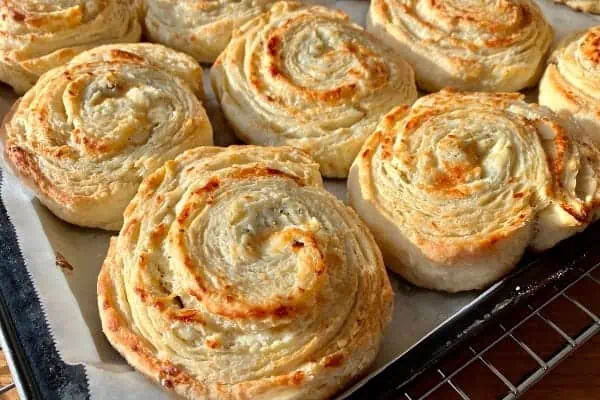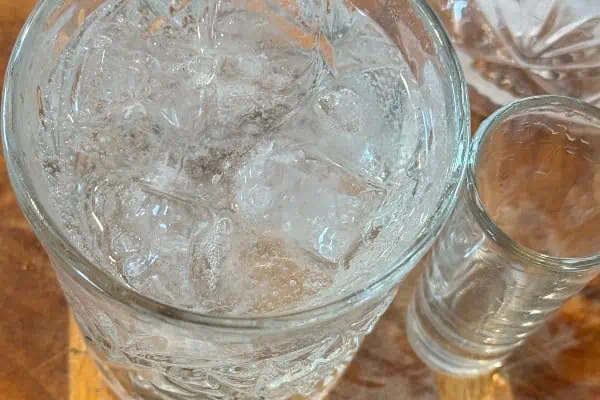In an interview, Bob Weir, rhythm guitarist for the Grateful Dead, admitted somewhat sheepishly, that yes, it was a bit embarrassing learning how to play the slide guitar on stage. All his mistakes were out there for the audience to see. Judging by the success of the Grateful Dead’s live shows from the mid ‘60s until the mid ‘90s, and by the legions of “Deadheads” who continue to collect tapes and discuss minutiae in journals both online and in print, the audience forgave Bob Weir.
I hope, dear reader, that you will be as forgiving. Though I love wine, and have strong opinions about it, what I know about wine would fi t into a very small aquavit glass. I’m learning on the job. My mistakes will be out there for everyone to see. But if you’re going to learn, you have to start somewhere, so the other night I invited a friend, equally interested and equally a rookie, to come over for a tasting of two different Sauvignon blancs.
Here’s what I knew about Sauvignon blancs prior to that night: I don’t like Oyster Bay Sauvignon Blanc, from the Marlborough district in New Zealand, because its bouquet is suggestive to my nose of cat’s pee.
Before you turn away, know that cat’s pee is an accepted descriptor, in wine-tasting circles, for the bouquet of Sauvignon blanc.
Wine expert Jancis Robertson says, “The smell is sharp and piercing…and reminds different tasters variously of gooseberries, nettles, crushed blackcurrant leaves, and occasionally cat’s pee.” My italics.
For our tasting I selected two bottles of similar price recommended by Yukon Liquor Corporation staff: Stoneleigh Latitude Sauvignon Blanc 2013, from the Golden Mile in the Marlborough region New Zealand, famous for its stony soil, and Lailey Vineyard Sauvignon Blanc 2013 VQA from the Niagara River sub-region of the Niagara Region in Ontario, where the soil is red shale with a high silt and clay content.
The Lailey is available in Whitehorse for a limited time only, and the Stoneleigh Latitude is interesting because it’s stored in wooden casks for a period before bottling, unusual for a “sauv blanc”, as Malcolm Mills from the Whitehorse liquor store reports.
My fellow experimenter and I decided to taste the wines alone, alternating with sips of water, and then taste them again with goat cheese, a recommended accompaniment. We went for President’s Choice goat brie.
We chilled the wines for an hour and fifteen minutes before sampling, and poured about an inch in the bottom of each glass. We equipped ourselves with pen and paper, and drew a line down the middle with “Canada” on one side and “New Zealand” on the other.
I picked up Hugh Johnson’s pocket wine guide to read a few words about sauv blancs so we would generally know what to expect, but my friend stopped me. “Let’s taste fi rst and then read what the experts say,” she said.
But in that quick peek I did glimpse the word “grassy”, which as you’ll see, had an influence. We started with the Lailey, swirling the wine in the glass and sniffing a number of times, trying to identify what we smelled.
My notes: wet field. straw?? Fresh wind, tidal flats, spring. My friend asked, “How do we learn to identify what we are smelling?”
We talked about the tantalizing difference between recognizing a flavour and being able to name it, about metaphor, about the subjectivity of taste and smell, and how a shared tasting lexicon could possibly develop, given that subjectivity.
Then we tasted the Lailey, moving it through the mouth.
My notes: tingly. bracing mouth feel. honey. apple. acidic. light. softer as it warms; acid less pronounced.
We moved on to the Stoneleigh, first swirling, then sniffi ng. “Whoa!” said my friend. There it was, that sharp, almost acrid aroma familiar from the Oyster Bay.
My notes: slightly sour, spicy smell of a fir tree in the house. fresh, crushed grass. My pal said, “Someone might turn away from that wine, because of the smell.”
But the taste was nothing like the smell, altogether more pleasant.
My notes: smoother, rounder, not nearly the acid on the tongue, roof of the mouth, back of the throat. lavender. cold popcorn. GRAPEFRUIT!!!
We had finally identified a taste that we both found in the wine. “Thank you,” said my pal. The next step was to try the cheese with the wine: bite of cheese, swallow, sip of wine.
Notes: The cheese: rich, tangy, goaty, ammoniac. The cheese with the Lailey: the flavours don’t fight—marriage. tiny echoes of each other. The cheese with the Stoneleigh: grapefruit + ammonia are almost too much. But, the Stoneleigh with tiny, delicious, nutty Nicoise olives? Check!
On balance, my first choice would be the Lailey, but I would not shun the Stoneleigh.
The important thing is I’m learning that wine is way more interesting when you slow down, smell, taste, think, and describe. I sense the beginnings of a personal wine lexicon that might one day share a substantial intersection with that of the critics.
In the meantime, I’m going to revisit the Oyster Bay. I may have missed something there.




